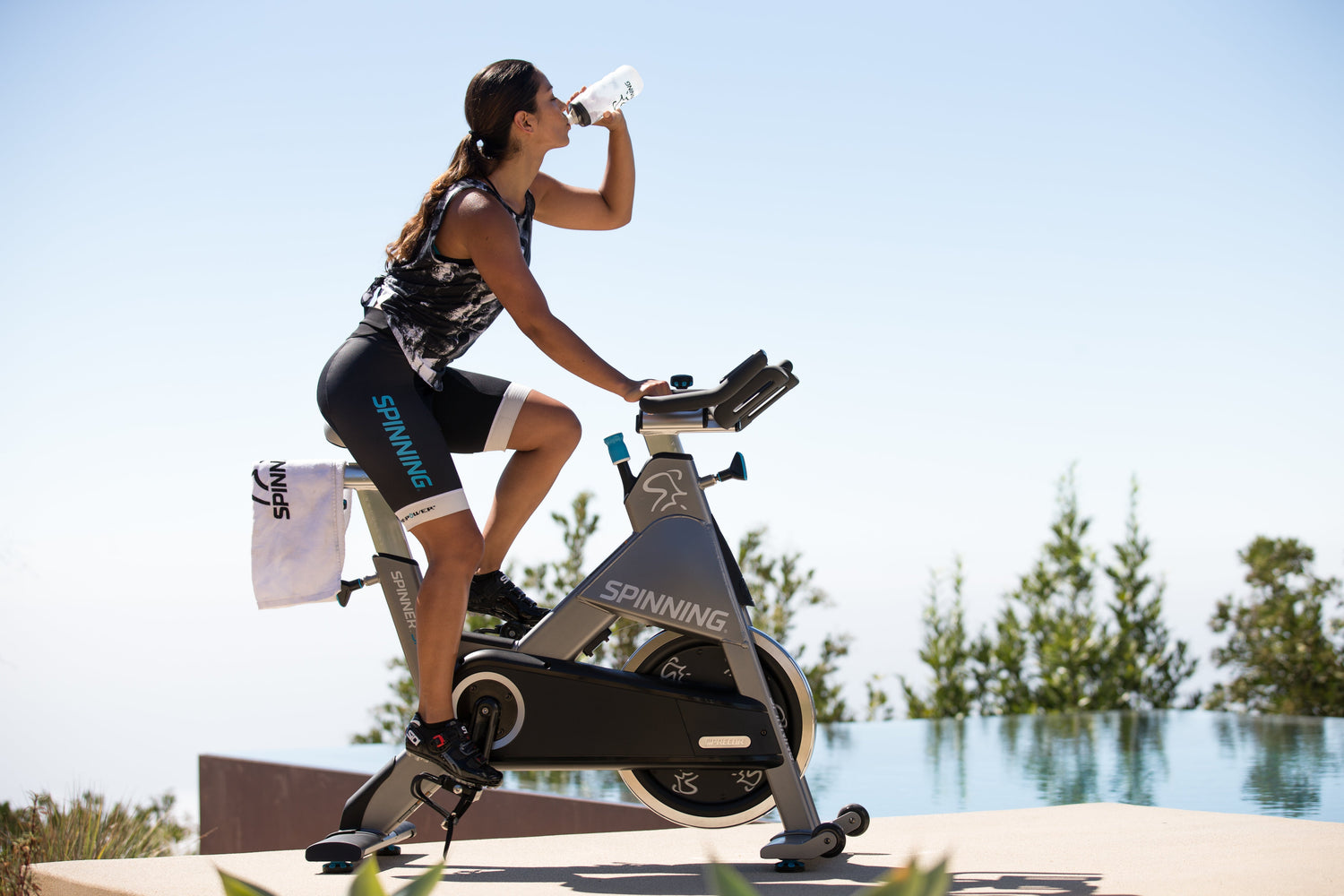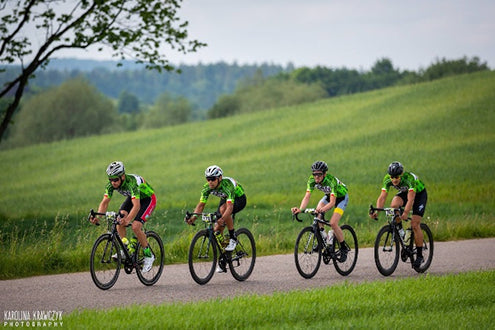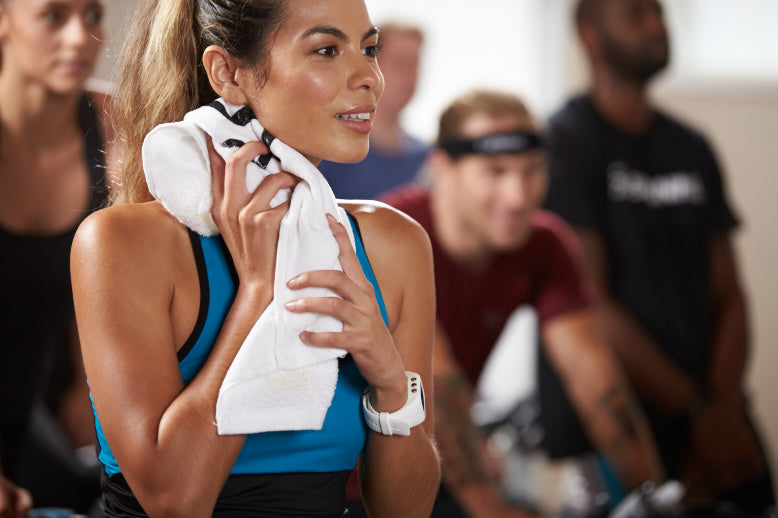It’s hot out there! Temperatures have definitely risen as we head into the latter half of summer. Knowing the facts on exercising in hot and humid conditions is a must for any exerciser, whether indoors or out. Check it out:
Wear as little clothing as legally possible to help with sweat evaporation!
You will perspire more as heat rises. Sweating is our way as humans to dissipate the heat as our core temperature rises. Be aware of the humidity in your exercise environment. The higher the humidity, the more difficult it is for sweat to evaporate into a moist environment.
- Avoid exercising in direct sunlight, which can make you even hotter and can give you a sunburn.
- Don't put on a rubber sweat suit to increase sweating! This is a dangerous practice, as it interferes with the body's ability to dissipate sweat, the body's main cooling mechanism during exercise, by creating another microcosm where moisture cannot escape. This becomes even more dangerous when the external environmental conditions outside the rubber sweat suit are hot and humid also.
- Clothing made of high-tech fabrics can help. Lose fitting clothing is better than tight fitting clothing for better air circulation over the skin to dissipate heat and allow sweat to evaporate.
- Light colored fabric will help reflect the sun outdoors and does not hold as much heat as dark colored fabric.
- Bring a towel to aid in ridding excess sweat. If you are inside taking a Spinning® class, it's important to wipe down your hands and handlebars as you grind it out-they can become slippery!
- That said, don’t forget your mask! Read this for the best face masks for exercising that are breathable (yet safe) to wear while you break a sweat.
Do not exercise during peak hours of the day (11:00AM - 1:00PM) when it is hottest outside.
- Try to exercise in the shade. It is a scientifically proven fact that keeping the body cool and a lower core temperature improves endurance and decreases fatigue.
Don't be shy with the fluids! Drink generously before, during and after exercise.
- Even the smallest degree of dehydration significantly reduces performance and reduces work capacity by as much as 15%.
- Consume about a pint (16 oz) of water before starting to exercise, at least 5-8 oz of water for every 20 minutes during exercise and continue hydrating after exercise. The rule of thumb in the Spinning® program is 40 oz. for 40 minutes of exercise OR an ounce for every minute of exercise.
- If activity goes over an hour, a sports beverage with electrolytes should be included. Gatorade is available almost everywhere; Cytomax is another good choice.
- Thirst is a poor indicator of hydration level. By the time the brain signals the body is thirsty, a person may have already lost 1% of their body weight. Losing 10% of your body weight to dehydration and sweat loss can result in death.
- Avoid caffeine. It acts as a diuretic and accelerates fluid loss.
- Urine should be pale or clear in color. Please note that certain medications or vitamin supplements may affect the color.
Pay attention to your rating of perceived exertion (RPE) and heart rate monitor! You may need to slow down!
- Your workload (measured in heart rate) increases as temperature and humidity increase. Your heart has to work harder in a battle between bringing blood flow to the skin to dissipate the heat by sweating and to bring blood flow with needed oxygen to the working muscles to continue activity. A higher heart rate is the result. Listen to your body.
- Decrease exercise intensity or take frequent breaks while working in the heat during longer workouts.
- Be on the lookout for signs of heat exhaustion, such as heavy perspiration, weakness, cold, pale or clammy skin, fainting or vomiting, and signs of heat stroke, such as those mentioned with heat exhaustion and hot, dry, red skin, rapid heartbeat, confusion, and loss of consciousness. Either, if left unattended, can be serious and even fatal.
Remember that exercise is supposed to enhance our well being and health, not drive our bodies into the ground! To continue and improve exercise performance during these warm months, be smart and prepare for the heat and humidity.
Story contributed by Nicole St. Jacques, NSCA-CPT, Master Instructor, Houston, TX (Originally published in Spinning® Instructor News, June 2003)





Leave a comment
This site is protected by hCaptcha and the hCaptcha Privacy Policy and Terms of Service apply.